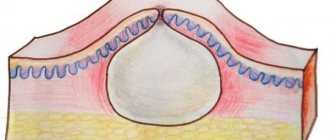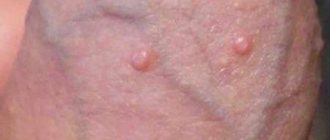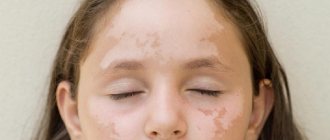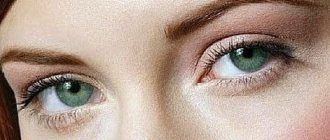Each of us periodically develops dry calluses on our heels throughout our lives. This is a consequence of heavy loads on the feet, wearing shoes with thin or hard soles, high heels, and uncomfortable shoes. Despite the fact that dry callus does not cause much harm to a person, its formation should not be ignored and it is better to begin treating it as quickly as possible. Because over time, the callus will harden, which contributes to the appearance of pain and burning in the heel area, both when walking and at rest. The skin on the heels will turn yellow, peel and look very unsightly.
To keep your heels soft and attractive, you need to get rid of dry calluses!
Classification of calluses
Calluses have acquired their own classification in medicine. All calluses are usually divided into:
- hard;
- soft;
- watery;
- blood;
- purulent;
- internal, or growing, calluses.
Ingrown callus
The last type, which received a second name - core calluses - are considered the worst variety - treatment is more difficult than others. They cause maximum discomfort and are more difficult and longer to treat than other forms.
What you need to know about calluses
Callus is a response of the body, skin, to all kinds of mechanical factors. Occurs more often on the leg. Watery callus is a common and common form. Represents a bubble filled with serous light contents. Such a callus does not cause severe pain and hyperemia. It's easy to get rid of. It is enough to puncture the bubble and release the liquid causing the process. Then you need to treat the wound with a disinfectant solution and apply a bandage with ointment, for example, Levomekol.
Blood calluses, as the name suggests, are filled with blood. They usually develop on the hands and fingers. The little finger is most susceptible to the formation of bloody calluses. This type of callus is more difficult to treat than watery callus. It is not possible to cure it on your own. It is better to consult a doctor for recommendations.
Purulent - a callus where serous exudate is replaced by purulent one. Suppuration occurs due to the penetration of pathogenic microorganisms into the cavity of the bladder. Treatment is exclusively surgical, carried out in a hospital. It is forbidden to treat such a callus at home, even on the little finger.
An internal callus on the heel is characterized by the formation of a dense rod that grows deep into the tissue, causing severe pain and discomfort, making treatment difficult. It is impossible to get rid of such calluses without professional help.
Internal callus
An internal callus on the heel looks like a rounded, small area with very rough skin, in the middle of which there is a depression, as if plugged with a cork. More often, ingrown calluses are found on the heels, toes, and little toe. Favorite places of localization are the interdigital spaces on the foot. These calluses occur on the hands, but rarely, mainly on the little fingers.
When you can’t do without the help of a specialist
There are times when pharmacy or folk remedies did not help. Sometimes suppuration and bleeding of calluses occurs. A person wonders what to anoint the problem area with so that the problem disappears. But if such symptoms appear, you should immediately seek professional help from a doctor. Because non-healing wounds on the heels can be a sign of serious diseases (diabetes, herpes and eczema). In this case, in the absence of the necessary treatment, there can be serious consequences, and even amputation of the leg. The specialist will conduct an examination, prescribe tests and, based on the data obtained, select the optimal treatment option and tell you what to do for a speedy recovery.
Internal calluses: main causes
Any pathological process in the body does not arise independently; there is always an objective reason that causes incorrect reactions and malfunctions in the body. It is important to understand the reasons for using the right treatment. In the case of internal calluses, the causative factors are:
- unsuitable shoes: small and large sizes;
- Internal calluses often appear in the fair half of humanity, who prefer high-heeled shoes when worn for a long time and frequently. Development occurs due to the redistribution of pressure on the forefoot;
- excess weight causes load redistribution;
- becomes the result of an ordinary watery callus or bloody callus;
- internal callus can appear on any part of the body that is systematically exposed to increased physical and mechanical stress;
- the formation of calluses is possible due to constant trauma to the skin by a foreign object that has entered the skin (for example, a wooden splinter). Constant trauma leads to excessive keratinization of the skin;
Rubbed heel
- calluses may develop as a result of a viral or fungal infection;
- If internal calluses appear on the hands, they become the result of constant disregard for protective gloves. Occurs predominantly on the palms and knuckles;
- any “wet” callus on the foot, even on the little toe, which has not been treated or treated with disinfectant solutions, can turn into a “dry” callus, and later transform into an internal callus.
Prevention
It is more difficult to cure a callus that has formed than to prevent its appearance. But this is quite possible by adhering to a few simple rules.
- Use only correct shoes. The latter should be clean, comfortable, and necessarily suitable for the size of the foot. We must not forget about natural ventilation for the legs while walking, especially during hot periods.
- Choosing the right socks is also a good way to prevent callus formation.
Despite the fact that there are enough ways to eliminate any type of calluses that form on the heel, it is still not worth starting the process.
They can be quickly and easily cured on their own, so at the first symptoms of its appearance it is necessary to take appropriate measures. And so that the callus formed on the heel does not become a serious problem for the feet, it is necessary to provide proper and timely care.
Treatment of ingrown calluses
Getting an internal callus on the little finger is easy, but getting rid of it will require more time and effort. It is better to treat by turning to professionals so that the process goes faster. Treatment by a doctor is possible; it is no worse to cure such calluses in cosmetic clinics and offices.
A number of basic techniques have been developed aimed at treating calluses. A large group of means are professional methods. These include:
- Drilling of the callus is carried out using a pedicure apparatus. A special milling attachment is used, selected strictly according to the size of the pathological focus. The internal callus is removed extremely carefully, carefully ensuring that all pathological tissue is excised. This is important; even a small piece of callus remaining in the wound can restore the callus to its previous size in a short time. When the callus is removed, an anti-inflammatory or antifungal agent is placed deep into the wound, and the wound is hermetically sealed with a bandage.
Callus removal
- Laser removal is a new method of combating internal calluses. Laser is used in severe and advanced cases, when other methods do not help to cope and prevent relapses. The laser has the ability to burn out pathological tissue along the depth of the callus. The best quality of a laser is its ability to simultaneously remove pathogenic microorganisms in a local area. Lasers provide a 100% guarantee of the absence of inflammation or relapse at the surgical site.
- Cryotherapy or cryodestruction. An effective method aimed at combating calluses. The method is based on the use of cold. More often the procedure is performed with liquid nitrogen. It is applied to the callus area for 30 seconds, helping to exfoliate the pathologically keratinized tissue.
These methods of professional treatment of calluses are absolutely painless and safe for health. They allow you to completely get rid of internal calluses in a single session.
Surgery
The main treatment for internal callus is a drilling procedure. This is one of the simplest operations that even a pedicurist can perform. Doctors recommend it to their patients. But after the drilling procedure, a hole remains at the site of the tumor. So it can pose a danger in the form of infection and so on. Therefore, after the callus drilling procedure, the remaining hole must be treated with special antiviral agents prescribed by a specialist.
Removing callus at home
Removal of internal calluses is performed at home. Of course, professional methods will help faster and more efficiently, but when there is no way to turn to professionals, they use their own strength. Remember, you won’t be able to deal with an internal callus on your foot so quickly and easily on your own. The process will require a lot of time, effort and persistence.
Before removing internal calluses, you will need to first soften the skin, otherwise mechanical manipulation will not help cope with the process.
It is possible to cut out the callus with a razor, but this method does not guarantee the final elimination of pathologically altered tissue. There is a high risk of injuring surrounding tissues with a sharp blade when performing manipulation; cause infection and provoke suppuration of the process. You will need the help not of a cosmetologist, but of a doctor, and a purulent surgeon.
Is it possible to pierce?
Many people are interested in the question: is it possible to pierce a large dropsy on the heel?
It is recommended to do this only on the first day of the appearance of a callus, strictly observing the following rules:
- Treat the skin near the bladder with antiseptic drugs.
- Moisten a sterile needle well in 70 percent alcohol.
- Insert the needle into the side of the bladder. It is not allowed to puncture the center of the blister.
- To ensure that the contents flow well, it is recommended to make several punctures.
- Using sterile gauze, press the blister against the skin to remove all the fluid.
- Apply an anti-callus plaster.
After a puncture, it is important to apply the bandage twice a day, and it is recommended to remove it before going to bed at night so that the wound heals faster.
If the blister has accumulated fluid again, it can be re-punctured.
Medicines for internal calluses
The modern pharmaceutical market offers a lot of products to help cope with internal calluses. Medicines have been developed: ointments, gels, pastes, patches, liquid products.
Corn ointment
- Keratolytic ointments, gels and liquids. The main active ingredient of the products is acetylsalicylic acid, which is better than other products in helping to cope with excessively keratinized skin. Remember, you must be careful when using medications; they can damage healthy tissue on the foot. Popular products of the group: the drug “Not a callus”; in ointment form “Super antimozolin” - the composition contains lactic acid (instead of salicylic acid), urea, which has a clear abrasive effect; “Stop callus” is a liquid product. "Vitaon" - the product compares favorably with other presented drugs; it contains exclusively natural substances.
- Anti-callus patches. Anti-callus patches designed for soles are much more popular than ointments and liquid products. The famous representative of the group is the domestic patch “Salipod”. The patch contains salicylic acid, providing pronounced effectiveness. “Salipod” is not the only representative of the group. The Enzi patch is a Chinese product; in addition to salicylic acid, it contains propolis and other environmentally natural ingredients. When choosing shepherd as a treatment, be sure to check which calluses the drug is intended to treat. It is not recommended to use the patch on damaged skin. The patch must be applied strictly according to the instructions: a soft pad soaked in medicines is placed in the place of the callus on the sole. The duration of the patch is at least 24 hours.
How to quickly cure flayed ones?
If the top layer of the callus is damaged, it is best to wash it with an antiseptic (peroxide or chlorhexidine, these agents cause the least burning sensation), and stick a patch containing acetylsalicylic acid on top. This is a component that has analgesic and anti-inflammatory effects.
What to apply to make it heal faster?
The most suitable remedies for rapid healing of calluses are:
- Salicylic ointment.
- Syntomycin emulsion.
- Levomekol.
- "Compeed" patch.
- Plaster "COSMOS Hydro Active" from HARTMANN PAUL.
Is it possible to apply iodine?
Yes, calluses can be smeared with iodine. It is better not to apply the solution to the skinned area.
The concentration of the product should be minimal to avoid potential burns to the skin, even if it is not damaged. To do this, iodine can be diluted with water in a 1:1 ratio. You need to apply it very carefully, as the product causes a strong burning sensation.
Is it possible to anoint with brilliant green?
Zelenka is less aggressive than iodine. There is no point in applying the product to dry calluses, because it dries out the skin even more.
It is best to use brilliant green to treat wet, unbroken calluses. This will ensure the prevention of secondary infection.
An exposed area of skin should not be lubricated with brilliant green, because, like iodine, it can cause a burn. The dilution ratio of the product with water is the same – 1:1.
How to treat an open one?
First of all, the open callus must be disinfected. Peroxide and chlorhexidine are suitable for this. It is better not to use alcohol, since its use may cause painful sensations on an already damaged area of skin.
You need to let the callus dry a little. Then it is sealed with a bactericidal plaster to speed up healing and prevent the entry of pathogenic bacteria.
Traditional medicine
If a person is an ardent opponent of the chemical pharmaceutical industry, and calluses on his feet are bothering him, traditional medicine will come to the rescue:
- Baths with soap and soda are a proven remedy for getting rid of calluses on the feet. Ideal for calluses on the soles that are not deeply embedded in the tissue. The bath is easy to prepare: add a little soda and soap to hot water. Procedure time up to 30 minutes. The baths will need to be repeated 5 to 10 times. Often, the callus falls out of the tissue on its own, without treatment with pumice.
- Mustard bath. Using a similar principle, mustard is diluted in hot water. In terms of timing - like with baths of soap and soda. For best effect alternate.
- Vinegar essence is a well-known remedy for internal calluses. Gently drip a little vinegar onto the “head” of the callus located on the sole. Apply an adhesive plaster to the wetted area, protecting healthy tissue.
Onion
The second equally effective remedy is onions. It needs to be ground in a meat grinder. The resulting pulp is applied to the area with the neoplasm, covered with polyethylene and fixed. Onion compress is made in the same way as lemon compress.
A cut aloe leaf, a piece of raw potato, bread and garlic are also applied to the callus at night. The main rule for effective treatment of internal calluses with folk remedies is that a compress or lotion from any selected component is applied directly to the affected area. In this case, you need to ensure that the product used does not come into contact with a healthy area of the skin. But you shouldn’t remove the callus yourself. If its base is located deep in the skin tissue, then it will not be possible to remove everything on your own. The remains can grow again.
Deep subcutaneous callus can only be removed using special instruments. And, according to experts, no drugs can cope with its treatment. Doctors especially do not recommend using various lotions to treat internal calluses. They can damage healthy tissue cells. Callus fluid will not help in treatment either. Especially if you apply it carelessly. Since this drug consists of alkali, when it gets on healthy skin, it provokes a burn, which is more difficult to treat than the callus itself. Due to the high probability of relapse, treatment can only be prescribed by a doctor. Simple cutting is not a cure.











